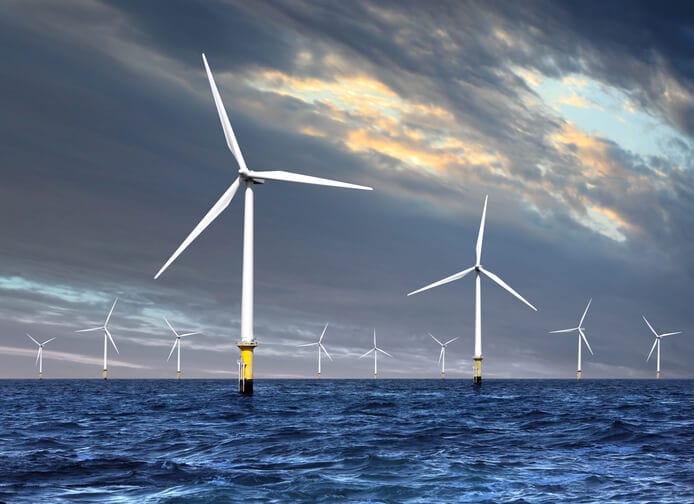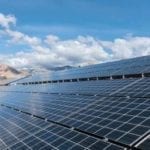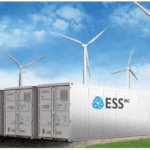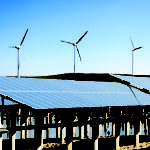A new report from the International Renewable Energy Agency (IRENA) shows costs for renewable power are increasingly cheaper than those for generation from coal, reinforcing the trend of increased investment in solar and wind power and away from fossil fuel-powered electricity production.
The IRENA report—Renewable Power Generation Costs in 2019—showed that more than half of the new renewable energy generation capacity added worldwide last year operated at a lower cost than even the least-expensive new coal-fired power plants. Its findings echoed the sentiments of several U.S. renewable energy advocates who participated in an online panel discussion Tuesday organized by the American Wind Energy Association (AWEA) and attended by POWER.
The report, released June 2, said recent power auction results show the trend of cheaper solar photovoltaic (PV) and onshore wind power is accelerating, putting more economic pressure on coal plants, and “reinforcing the case to phase-out coal entirely.” IRENA said as much as 1,200 GW of existing global coal-fired generation capacity could cost more to operate next year than new utility-scale solar PV.
“We have reached an important turning point in the energy transition. The case for new and much of the existing coal power generation, is both environmentally and economically unjustifiable,” said Francesco La Camera, director-general of IRENA. “Renewable energy is increasingly the cheapest source of new electricity, offering tremendous potential to stimulate the global economy and get people back to work. Renewable investments are stable, cost-effective and attractive offering consistent and predictable returns while delivering benefits to the wider economy.”

The IRENA report noted that replacing the most-costly 500 GW of coal generation with solar PV and onshore wind in 2021 “would cut power system costs by up to $23 billion every year.” The group also quantified the environmental benefits of that change, saying replacing coal-fired generation with renewable energy would “reduce annual emissions by around 1.8 gigatons (Gt) of carbon dioxide (CO2), equivalent to 5% of total global CO2 emissions in 2019. It would also yield an investment stimulus of $940 billion, which is equal to around 1% of global GDP.”
Marlene Motyka, Deloitte’s Global and U.S. Renewable Energy Leader, told POWER on June 3 that “Declining renewable costs are the key reason we’re seeing more wind and solar in the power generation mix in the U.S. and other countries. This is especially notable as electricity demand has declined during the COVID-19 pandemic—since dispatchers turn to the resources with the lowest marginal cost first.”
La Camera said bringing more renewable energy online also could help restore the global economy in the wake of the coronavirus pandemic. “Solar PV and onshore wind offer easy, rapid roll-out possibilities, while offshore wind, hydropower, bioenergy and geothermal technologies provide complementary and cost-effective medium-term investment options,” the report said.
“A global recovery strategy must be a green strategy,” said La Camera. “Renewables offer a way to align short-term policy action with medium- and long-term energy and climate goals. Renewables must be the backbone of national efforts to restart economies in the wake of the COVID-19 outbreak. With the right policies in place, falling renewable power costs, can shift markets and contribute greatly towards a green recovery.”
‘Radical Market Transformation’
Abigail Ross Hopper, president and CEO of the Solar Energy Industries Association (SEIA), during Tuesday’s panel discussion said, “We’re talking about a radical market transformation,” while noting renewables will likely continue to face political and regulatory challenges. Hopper said that renewable energy advocates must keep in mind that increased deployment of renewable is “taking other people’s market share.”
Hopper was part of a panel that included Tom Kiernan, CEO of AWEA; Kelly Speakes-Backman, CEO of the Energy Storage Association (ESA); and Malcom Woolf, president and CEO of the National Hydro Association (NHA). They discussed “Onward Together: Majority Renewables by 2030,” as part of an online discussion in lieu of what would have been an in-person event—AWEA’s CLEANPOWER 2020 conference, originally scheduled for June 1-4 in Denver, Colorado, but unable to be held due to the coronavirus pandemic.
The wind, solar, hydro, and energy storage industries have released a set of joint advocacy principles to support making renewable energy the leading U.S. source of electricity over the next decade. The principles include “building a more resilient, efficient, sustainable, and affordable grid; achieving carbon reductions; and advancing greater competition through fair market rules.”

“These principles are just another step toward realizing our vision for a Solar+ Decade,” said Hopper, who—like IRENA’s La Camera—said renewable energy can help drive the economic recovery after the COVID-19 pandemic. “In the face of this dreadful pandemic, our nation must chart a path forward that puts a premium on innovation, jobs recovery and a smarter approach to energy generation. The right policies will make a growing American economy fueled by clean energy a reality for all Americans.”
“We are pleased to join forces with our clean energy friends to substantially reduce carbon emissions by 2030, building a more resilient, efficient, sustainable, and affordable grid for generations to come,” said Speakes-Backman, who will be a keynote speaker at POWER’s Distributed Energy Conference in Chicago, Illinois, Oct. 19-21. “A majority of generation supplied by renewable energy represents a significant change in the way we operate the grid, and the storage industry is a fundamental asset to provide the flexibility that a more modern, decarbonized grid will require. We look forward to actively collaborating with our colleagues to make this vision a reality by 2030.”
Kiernan said that “2019 was a great year for wind … we’re relentlessly innovating with longer blades and higher towers.”
“The path towards an affordable, reliable, carbon-free electricity grid starts by harnessing the immense potential of hydropower, wind, solar and storage to work together,” said Woolf. “Today, hydropower and pumped storage are force multipliers that provide the grid with the flexibility needed to integrate other renewables onto the grid. By adding new generation onto existing non-powered dams and developing 15 GW of new pumped storage hydropower capacity, we can help accelerate the development of a clean energy electricity grid.”
The group said they want renewable energy to have the majority share—at least 51%—of U.S. power generation by 2030. That number includes a 20% share of generation from both solar and wind, at least 9% from hydropower, and another 2% for other renewable sources. Speakes-Backman noted that energy storage would support all renewables by providing flexibility and reliability.
Hopper predicted there will be 600,000 workers in the solar energy industry in 2030, and Kiernan said he expects 83,000 new jobs in offshore wind over the next decade. Woolf and Speakes-Backman each said there will be 200,000 jobs each in the storage and hydro industries.
Falling Electricity Costs
IRENA in its report said renewable electricity costs have fallen sharply over the past decade for several reasons, including improved “technologies, economies of scale, increasingly competitive supply chains and growing developer experience.” The group said that since 2010, “utility-scale solar PV power has shown the sharpest cost decline at 82%, followed by concentrating solar power (CSP) at 47%, onshore wind at 39% and offshore wind at 29%.”
The group said costs for solar and wind power continue to drop year-over-year. IRENA said electricity costs “from utility-scale solar PV fell 13% in 2019, reaching a global average of 6.8 cents per kilowatt-hour (kWh). Onshore and offshore wind both declined about 9%, reaching 5.3 cents/kWh and 11.5 cents/kWh, respectively.”
IRENA said recent auctions and power purchase agreements (PPAs) show the downward trend continues for new projects coming online this year, and beyond. The group said solar PV prices based on competitive procurement could average 3.9 cents/kWh for projects commissioned in 2021, down 42% compared to 2019, “and more than one-fifth less than the cheapest fossil-fuel competitor … namely coal-fired plants.” IRENA noted “record-low auction prices for solar PV in Abu Dhabi and Dubai (UAE), Chile, Ethiopia, Mexico, Peru and Saudi Arabia confirm that values as low as 3 cents/kWh are already possible.”
The group also for the first time looked at investment value in relation to falling generation costs. IRENA said “the same amount of money invested in renewable power today produces more new capacity than it would have a decade ago. In 2019, twice as much renewable power generation capacity was commissioned than in 2010 but required only 18% more investment.”
—Darrell Proctor is associate editor for POWER (@DarrellProctor1, @POWERmagazine).










